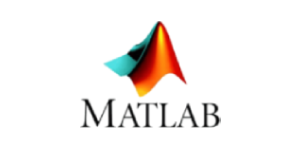Research Work
- Home
- Our Service
- Research Work
Navigating the Research Landscape: A Comprehensive Guide to Successful Research Work
Research and Development (R&D) serve as the cornerstone for the advancement of knowledge in various scientific and technological domains, paving the way for the creation of innovative products, processes, and services. Our dedicated R&D team, comprising seasoned faculty and research scholars, stands committed to providing robust project mentoring and comprehensive research guidance. In this guide, we will delve into the essential steps for conducting research, illuminating the path toward academic excellence.
Steps For Conducting Research
Selection of Topics
The inception of any research endeavor begins with the meticulous selection of a relevant topic. This crucial step sets the foundation for the entire research process. A well-defined topic not only establishes the purpose of the research but also guides subsequent actions. After choosing the topic, researchers often articulate a general problem statement or the overarching goal of their study.
State the Problem in General Terms
A clear and concise problem statement is instrumental in steering the research in the right direction. It encapsulates the essence of the research, defining the issues to be addressed and providing a roadmap for investigation. Researchers must articulate the problem in general terms, laying the groundwork for an in-depth exploration.
Thoroughly Collect Materials of Previous Work
A comprehensive literature review is indispensable for any research project. Researchers should meticulously gather materials from previous works relevant to their chosen topic. This step not only aids in understanding the existing body of knowledge but also helps in identifying gaps and areas for further exploration.
Understand and Study Relevant Materials
Once the materials are collected, researchers must invest time in thoroughly understanding and studying them. This process facilitates a deeper comprehension of the existing research landscape, allowing for the identification of patterns, trends, and potential avenues for original contributions.
Specify Your Problem in Detail
Building upon the initial general problem statement, researchers should proceed to specify the problem in detail. This involves a meticulous breakdown of the research question, defining the variables, and outlining the scope of the study. Clarity at this stage is crucial for precision and effectiveness in subsequent research activities.
Implement Own Ideas, Compare with Previous Work, and Review
With a detailed problem specification in place, researchers can now implement their own ideas and methodologies. This step involves designing experiments, collecting data, and executing the research plan. A critical aspect is the comparison of results with previous work, allowing for the validation or refinement of hypotheses. Continuous review ensures the research stays on course and aligns with the intended objectives.
Prepare Reports and Publish Them
Upon completing the research, the next vital step is the preparation of comprehensive reports. These documents encapsulate the entire research journey, detailing the methodology, results, and conclusions. Rigorous documentation is essential for transparency and reproducibility. Researchers are encouraged to share their findings through publications, contributing to the collective knowledge of the academic community.
Discuss Topics with Colleagues
Engaging in discussions with colleagues and peers is an integral part of the research process. It provides an opportunity for constructive feedback, alternative perspectives, and collaborative insights. Through meaningful discourse, researchers can refine their work, address potential limitations, and contribute to the broader scholarly dialogue.
In conclusion, the research process is a multifaceted journey that demands meticulous planning, dedication, and a systematic approach. By adhering to the outlined steps, researchers can navigate the complexities of research work, from topic selection to publication. As we embrace the dynamic landscape of knowledge creation, continuous learning, and collaboration with colleagues, we pave the way for groundbreaking contributions to science and technology.
Research Using Tools









